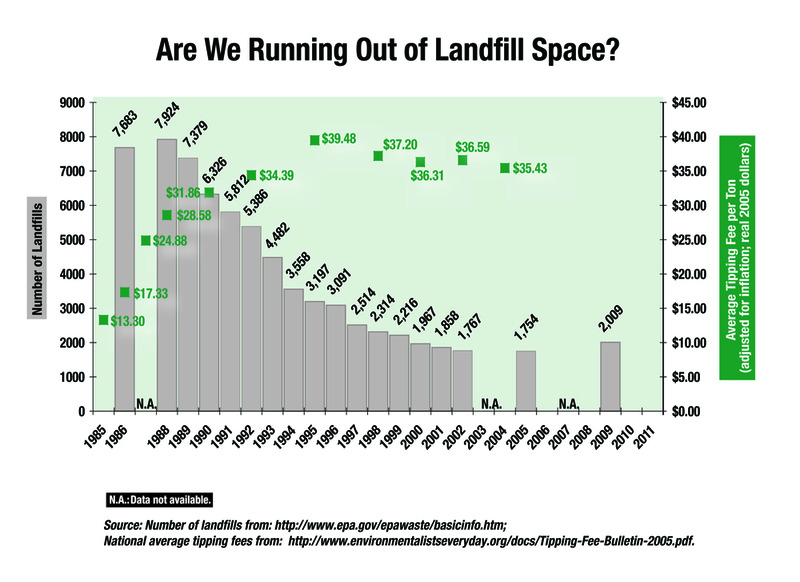
Waste is something that is low in value and costly to reuse. A resource, on the other hand, is an item that provides value for use where the costs of reusing the item are less than the value added from its use. Reusing, or recycling, resources makes sense and is a choice that markets help us make. People are willing to pay for a resource which signals to the owner that there is a value for it.
It is a widely held belief that we are running out of landfill space and, hence, should reduce the amount of garbage we dump. As shown by the chart above, the number of landfills has declined over the past two decades. Landfill capacity, however, has increased. According to the EPA, the number of years of remaining available landfill space has increased from about 9.5 years in 1990 to 20 years today. Landfill dumping fees (tipping fees shown on the graph) also demonstrate there is no lack of landfill space available. Tipping fees rose in the late 1980s and early 1990s in response to increased EPA regulations but have declined slightly since.
Recycling resources makes sense. Recycling garbage is a waste of resources.
Originally posted at Environmental Trends


